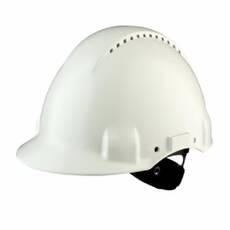- Special Offers
- Transceiver Radio
- Transceiver Accessory
- Antennas
- Antenna Accessory
- Cable
- Connector
- Installation Material
- Installation Tools
- Measuring Equipement
- Body Worn Camera
- Electrosmog
- Telephone
- Baby Monitor
- Fever Thermometer
- Radio Device
- Set-top Boxes
- Personal Protective Equipment
- Hearing Protection
- Eye protection
- Head Protection
- Protective Helmet
- Motorcycle Helmet Speaker
- Car Equipment
- Voltage Converter
- Dry Cell
- Battery
- Battery Charger
- Emergency Signal
- Amber Signal
- Sound Signal
- Light and Sound Signal Accessory
- Traffic Engineering
- LED Lamp
- Smart Home
- Mosquito Repellent Device
- Market - Other Products
- Discontinued Products
Pre-order (1)
Protective Helmet
Wearing a hard hat is mandatory in certain work areas. But helmets do more than just prevent dangerous head injuries. It also makes it easier to work in direct sunlight or in bad weather. But safety helmets are not only worn by construction workers, but also by foresters, lumberjacks, industrial mountaineers and foundry workers. Read more...
Pre-order (1)
• 6-point ratchet suspension allows wearer to customise height and fit
• Works with a variety of 3M Earmuffs and other accessories
• Inspired by climbing helmets with a brimless design to give you a clear upward view
• 3M Uvicator sensor disc tells you when your hard hat has been over exposed to UV-radiation and it’s time to replace it
• Customise your fit with multiple levels of vertical adjustment
• Optional vents
What standards must protective helmets meet?
Protective helmets worn on construction sites and when performing industrial tasks must meet certain safety standards. This is because the risk of injury, for example from falling objects or contact with electrical wires, is significantly increased during this type of work. The most suitable protective helmets for our needs must have different certification depending on the application. The two most important standards for safety helmets are EN 397 and EN 50365. The second concerns the versions that we have to wear when working on electrical networks, because they protect us from high voltage discharges up to 1000 V. Safety headgear to EN 397 can be certified with additional certification. These include protection against very low temperatures of -30 degrees Celsius or very high temperatures of +150 degrees Celsius or molten metal splashes.
How can safety helmets be cleaned and maintained?
For maintenance or cleaning, only use cleaning agents that will not damage the helmet material. It is therefore always a good idea to read the instructions for use. In general, these helmets should be cleaned with a mild soap detergent. Cleaning with other substances containing organic solvents may reduce the resistance of the safety headgear shell. When the helmet is not in use, keep it in a dry, cool place, away from light, heat, frost and where it will not be exposed to chemical attack. It is recommended to store the protective headgear at room temperature.
What kind of ventilation system do industrial helmets have?
Depending on the type of work, you can choose a protective helmet that does not have a ventilation opening. But if you need a model that must have such an element, choose one that allows efficient air movement through individually adjustable ventilation openings. Some helmets even have several adjustable ventilation zones. They can also be opened and closed at will. Why wear a safety headgear? Because these tiny openings allow warm air to escape easily, keeping your head at a comfortable temperature.
How can the helmet strap be adjusted for safe and comfortable wearing?
Many of us think that this type of headgear is an uncomfortable piece of work protective equipment, but this is a misconception. Today's modern industrial safety helmets fit comfortably on our heads. But this requires choosing the right size safety helmet. We also need to make sure that there are plenty of anchor points inside the helmet. We should preferably choose safety helmets with a comfortable strap made of absorbent material. They usually have an internal 4-point harness, but some industrial safety helmets have a six-point ratchet fastening.
What is the impact resistance of these helmets?
This varies from model to model. In general, classic safety industrial helmets used in the construction industry should be able to stop a blunt or pointed falling object without its shell breaking and without it or the object coming into contact with your head. Depending on the type of work, we should choose a helmet that transmits as little force as possible to our head. But choose a helmet that also protects your head from low and/or high temperatures and provides effective protection against molten metal splashes.
How often should helmets be changed for optimum safety?
There are two different types of protective helmets in terms of material. The thermoplastics and the thermosetting plastics. The majority of protective helmets for the construction and industrial sectors are made of thermoplastics. These models usually need to be replaced every four years.
There are manufacturers in some countries who offer helmets with a lifetime of up to seven years, provided the safety headgear is not exposed to external environmental influences. Thermosetting helmets are primarily used in hot workplaces or in companies exposed to chemical agents. In these cases, a particularly long service life is a basic requirement.
What does this mean? These industrial safety helmets have very good resistance to ageing and UV radiation, so they can usually be used for 8-10 years. Please note that, unlike food, the date on the inside of the helmet never indicates the expiry date, but always the date of manufacture.
We hope that our article on the importance of helmets has highlighted the critical role that this seemingly simple but life-saving device plays in everyday activities. Protecting your head is not only about complying with mandatory regulations, but also about taking responsibility for your own safety.


